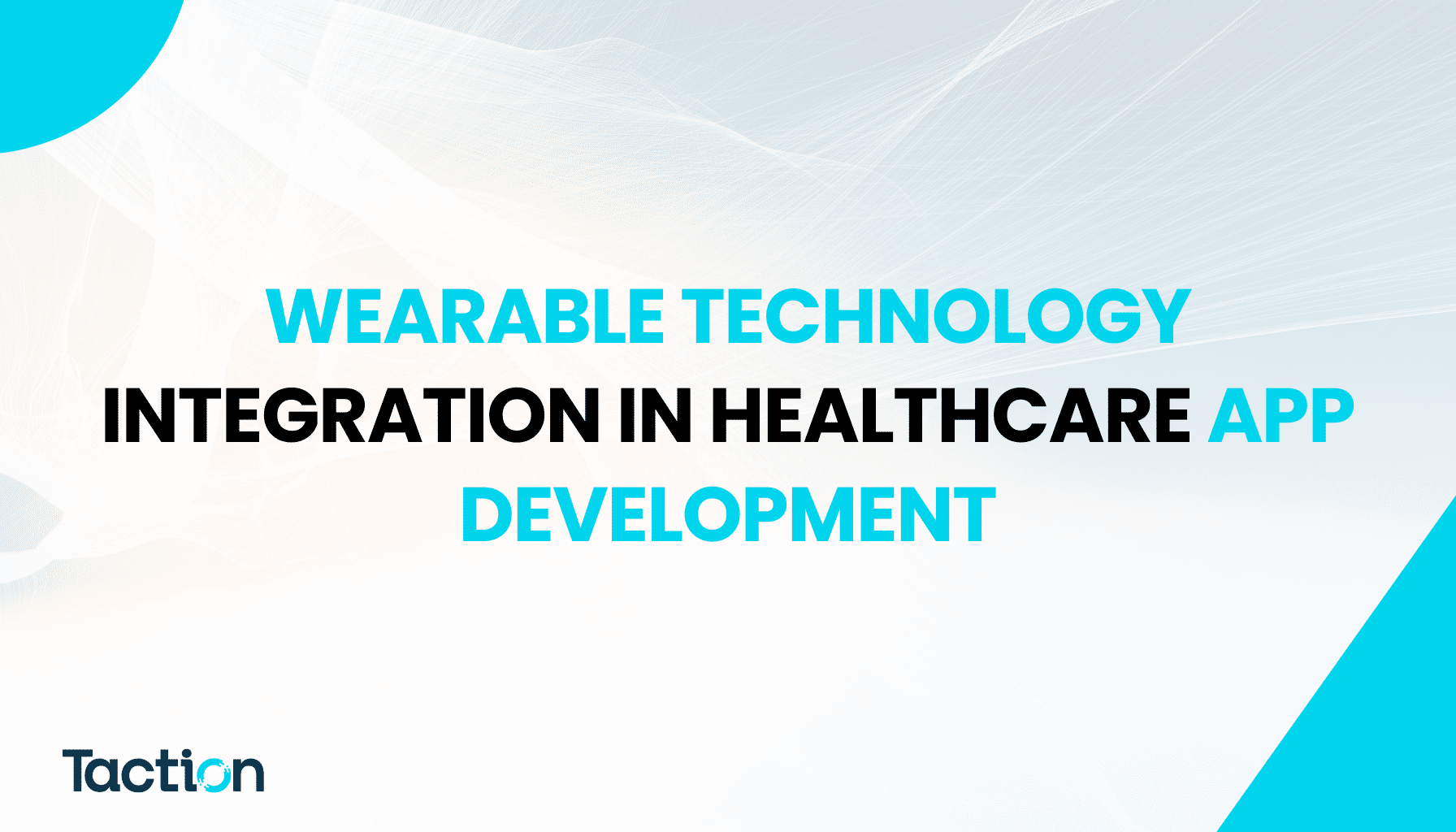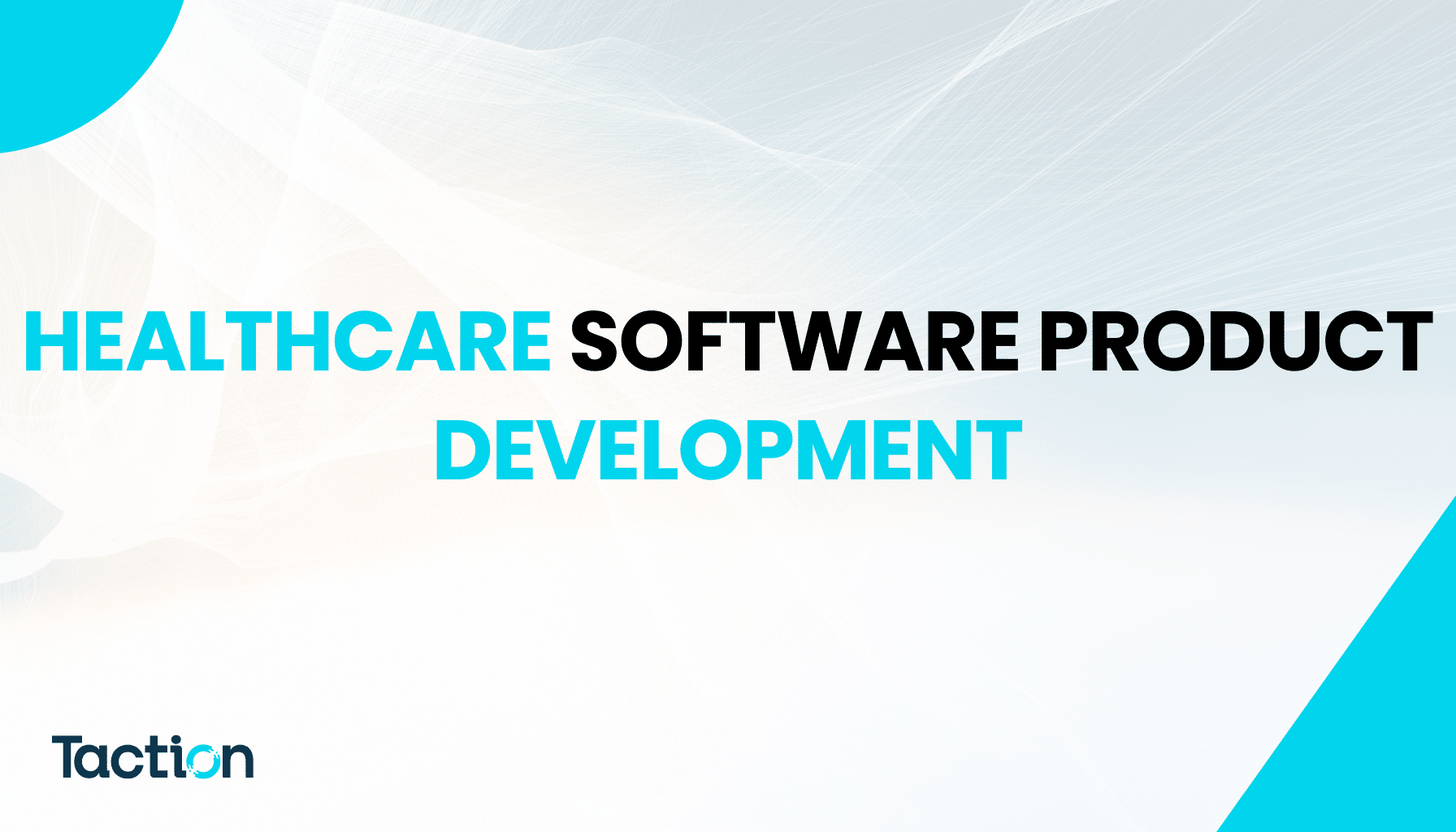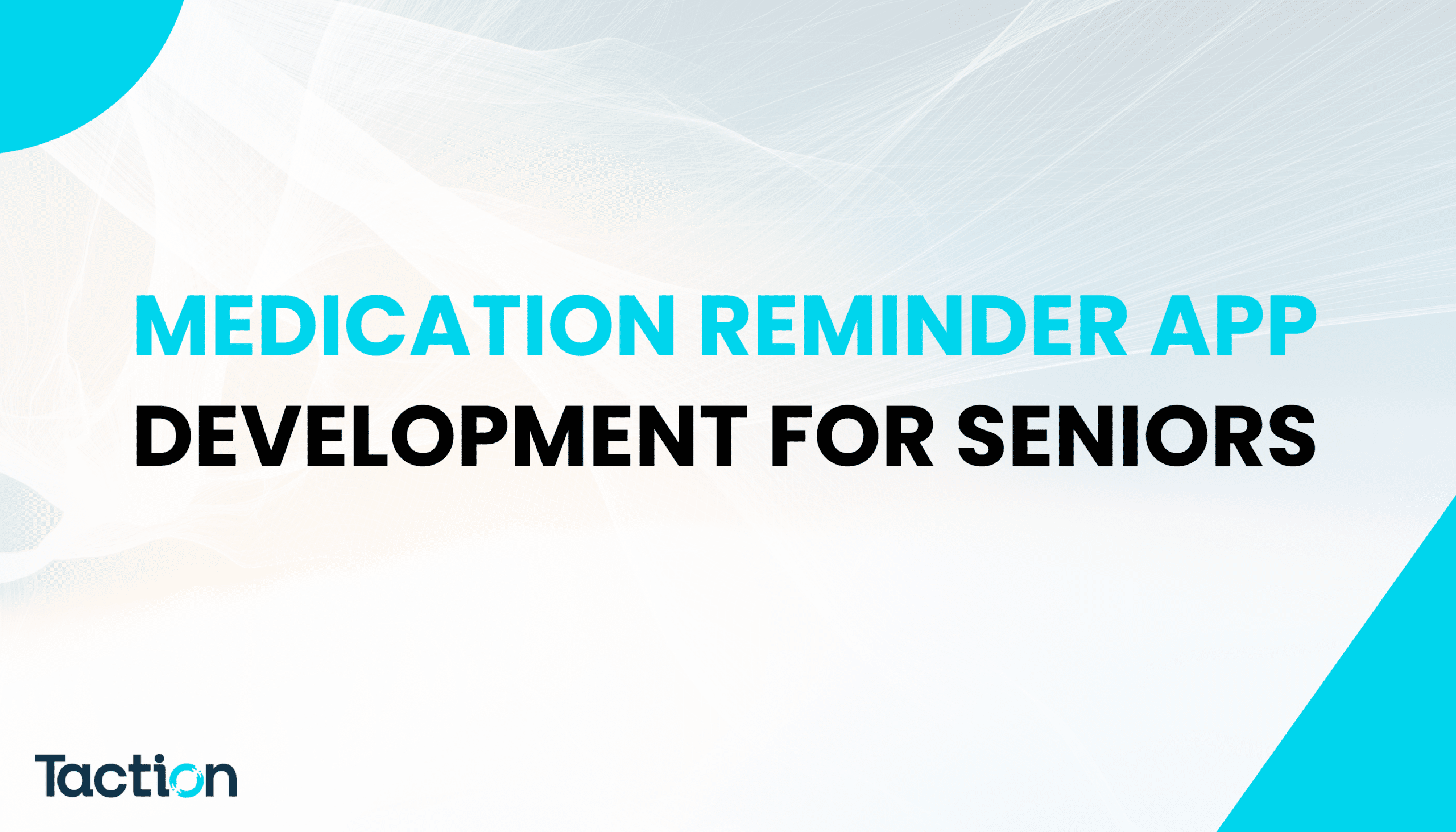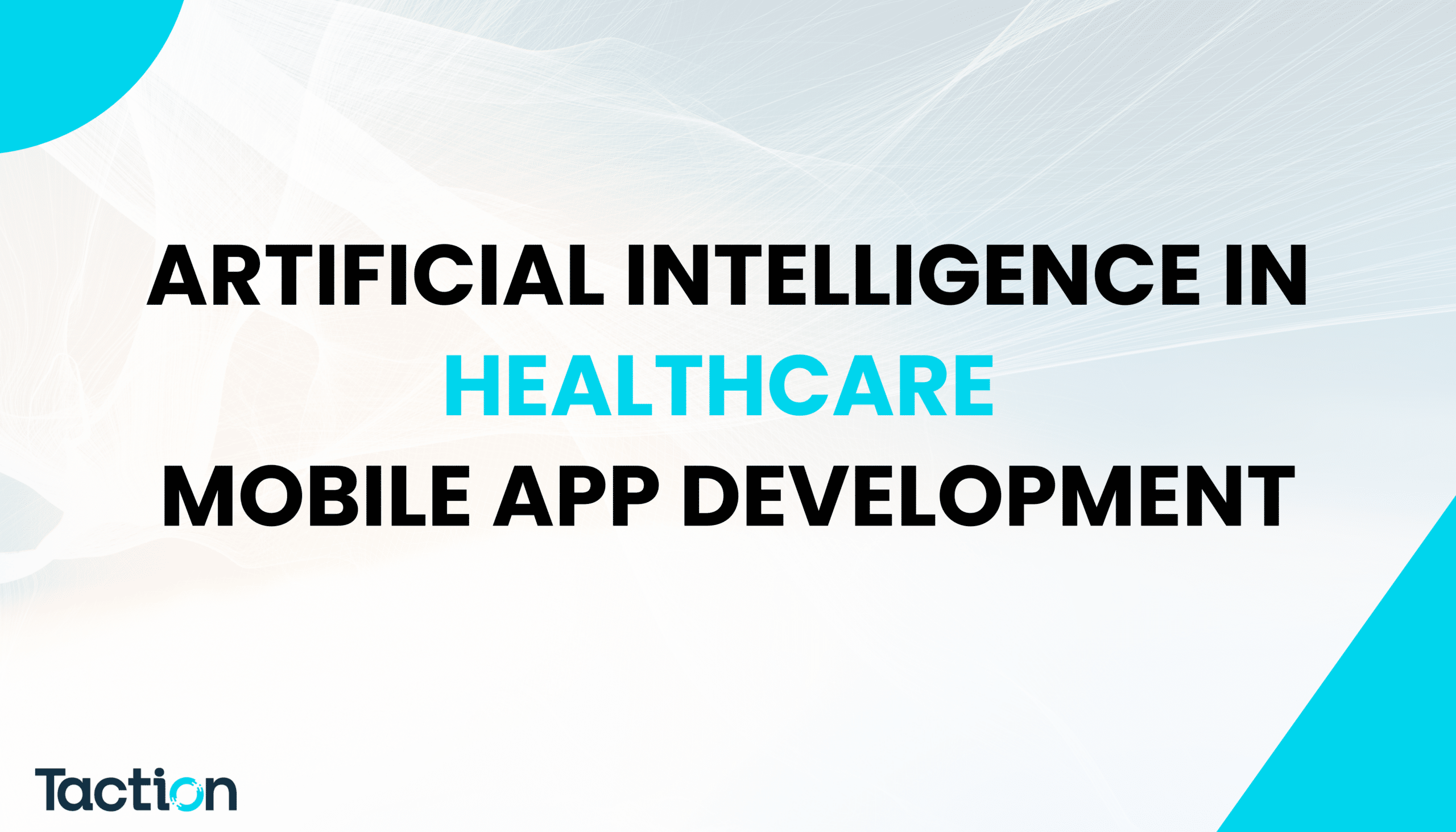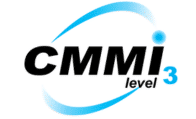Introduction to Wearable Technology in Healthcare
Wearable technology is no longer just about counting steps or tracking sleep. In healthcare, it has evolved into a life-changing innovation—empowering patients, caregivers, and providers with real-time, data-driven insights. From smartwatches that monitor heart rate and oxygen saturation to biosensors that detect arrhythmias and blood glucose fluctuations, the healthcare industry is embracing wearables like never before.
According to industry reports, the global wearable healthcare market is projected to exceed $100 billion by 2029, driven by the surge in chronic diseases, aging populations, and the demand for remote patient monitoring. This booming growth is also fueled by a shift from reactive to proactive care—where prevention and early intervention are the new norm.
But the real magic happens when these devices are paired with custom-built healthcare apps. That’s where wearable healthcare app development comes in—connecting the dots between raw sensor data and actionable clinical decisions. Today’s apps don’t just collect data—they analyze, personalize, alert, and even predict.
As one of the leading healthcare wearable app developers in USA, we specialize in building HIPAA-compliant, cloud-powered applications that transform wearables into intelligent care companions. Whether you’re a health startup or a large hospital network, integrating wearable tech into your digital strategy isn’t just innovative—it’s essential.
Ready to build a smarter healthcare app?
Why Wearable Technology is Disrupting Healthcare App Development
The healthcare landscape is undergoing a dramatic shift—from treating illness to predicting and preventing it. Patients today expect more than traditional care models—they want personalized, on-demand insights into their health, and custom wearable app development services are answering that call.
With the rise of chronic conditions and a growing focus on wellness, wearables are enabling real-time data tracking that empowers patients to take charge of their health. Instead of waiting for symptoms to escalate, physicians can now intervene early based on continuous biometric feedback.
Consumers are also demanding more from digital health platforms. They expect seamless connectivity, instant alerts, intuitive interfaces, and secure data sharing—all packed into a smartwatch or fitness band. This has pushed developers to build smarter, more scalable solutions.
But with great innovation comes great responsibility. Ensuring HIPAA-compliant wearable app solutions is non-negotiable. From end-to-end encryption to secure cloud integration, data privacy and compliance are at the core of every impactful healthcare wearable app.
Wearable technology isn’t just disrupting healthcare—it’s redefining it.
Transform your wearable tech vision into a real-world solution—
Key Use Cases of Wearable Healthcare App Development
Wearable healthcare technology is not just a passing trend—it’s a game-changer in how care is delivered, monitored, and optimized. By combining intelligent sensors with custom mobile apps, providers are unlocking new levels of patient engagement, early intervention, and long-term disease management. Here are some of the most powerful use cases reshaping healthcare today.
Remote Patient Monitoring (RPM)
Remote patient monitoring app development is one of the fastest-growing areas in digital health. Patients recovering from surgery, managing chronic illnesses, or aging at home can now be monitored continuously using wearables that track vitals like heart rate, oxygen levels, and activity. Physicians receive instant alerts when readings deviate from safe thresholds—enabling proactive interventions and reducing hospital readmissions. This approach not only enhances care quality but also reduces the burden on healthcare systems.
Chronic Disease Management and Digital Therapeutics
For patients living with diabetes, heart disease, or hypertension, chronic disease management wearables offer personalized support 24/7. Continuous glucose monitors, blood pressure wearables, and cardiac sensors can be paired with mobile apps that log readings, deliver medication reminders, and provide actionable insights. Going a step further, digital therapeutics via wearable devices offer evidence-based behavioral interventions, helping patients build healthier habits and adhere to treatment plans. These tools are revolutionizing chronic care by combining clinical intelligence with user-friendly experiences.
Fitness and Lifestyle Integration
Preventive health starts with informed daily choices—and wearables make that possible. With fitness tracker healthcare integration, individuals can monitor physical activity, stress levels, sleep cycles, and more, all in one place. Whether it’s a smartwatch reminding you to move or an app that analyzes your sleep patterns, these tools promote healthier lifestyles by turning everyday data into personalized wellness guidance. Sleep tracking wearable apps, in particular, are gaining traction for their role in improving mental health, recovery, and performance.
From hospitals to health-conscious individuals, the integration of wearables into healthcare apps is making care more connected, informed, and human-centric than ever before.
Integrating Wearables with EHR Systems and Health Ecosystems
The true power of wearable technology in healthcare is unlocked when it seamlessly integrates with existing clinical workflows—especially Electronic Health Records (EHRs). This connection transforms isolated device data into actionable clinical intelligence. With real-time data synchronization, care teams can view patient vitals, trends, and alerts directly within their EHR dashboard—streamlining decision-making and reducing manual input.
Integrating wearables with EHR systems requires more than just technical connectivity; it demands interoperability through secure APIs, standardized data formats like HL7 and FHIR, and compliance with HIPAA and FDA regulations. This ensures that wearable data isn’t just accessible—it’s trustworthy, accurate, and clinically useful.
Modern cloud-based wearable health platforms make this possible by acting as a bridge between devices and health systems. These platforms aggregate, process, and transmit data securely, enabling scalable integration across multiple apps, providers, and care environments. Whether it’s syncing a patient’s blood pressure from their smartwatch or updating glucose levels from a CGM device into their health record, these integrations foster a more complete picture of the patient’s health journey.
By embedding wearable data into broader healthcare ecosystems, providers can deliver more coordinated, proactive care—fueled by real-time insights, not retrospective records. It’s a crucial step toward smarter healthcare delivery and better patient outcomes.
HIPAA-Compliant Wearable App Solutions: Ensuring Data Privacy
In healthcare, innovation means nothing without trust. As wearable devices continue to gather sensitive health data, ensuring privacy and compliance becomes non-negotiable. That’s where HIPAA-compliant wearable app solutions play a critical role.
Every custom wearable healthcare app must meet stringent data protection standards—including HIPAA, HL7, and sometimes even FDA regulations—depending on the device’s functionality. From encrypting patient data in transit and at rest to managing access through secure authentication layers, privacy must be designed into the foundation of the app architecture.
Many wearables used in clinical settings are classified as FDA-approved wearable health devices, which further raises the bar for safety and data integrity. Apps integrating with such devices must follow rigorous testing and validation protocols to ensure medical-grade accuracy and legal compliance.
Beyond meeting legal requirements, compliance builds confidence. Patients are more likely to adopt wearable solutions when they know their data is handled securely and transparently. For healthcare providers and startups alike, developing secure, regulation-ready apps isn’t just smart—it’s essential for long-term credibility and scale.
Power your healthcare innovation with custom wearable app development.
Role of AI in Smart Wearable App Development
Artificial Intelligence is at the heart of the next wave of innovation in healthcare wearables. When combined with powerful sensors and custom apps, AI transforms passive health tracking into intelligent, actionable insights. From predicting health risks to personalizing treatments, AI is turning wearable devices into proactive healthcare companions.
Predictive Insights with AI-Driven Analytics
With AI-driven wearable health analytics, apps can go beyond displaying vitals—they can analyze trends, detect abnormalities, and trigger alerts before a condition escalates. By learning from continuous streams of biometric data, AI models can calculate risk scores, enabling early intervention for issues like heart irregularities or sleep apnea. These insights empower physicians to make data-backed decisions and patients to take preventive actions, improving long-term outcomes.
AI-powered healthcare wearables don’t just track—they think. Smart algorithms can detect subtle health changes and prioritize which alerts deserve attention, reducing alarm fatigue and enhancing clinical efficiency.
Personalized Medicine Through Wearables
One-size-fits-all treatment plans are no longer effective in today’s data-rich environment. With personalized medicine through wearables, apps can tailor care based on an individual’s health patterns, lifestyle habits, and genetic predispositions. Whether it’s adjusting medication schedules, recommending activity levels, or predicting flare-ups of chronic conditions, wearable tech powered by AI delivers truly individualized care—right from the wrist.
As AI continues to evolve, its integration into healthcare wearables will redefine how we understand, manage, and improve health on a deeply personal level.
Types of Wearables We Integrate with Custom Healthcare Apps
At the center of digital health innovation is a growing range of wearable devices—each offering unique ways to monitor, manage, and enhance patient care. Our team specializes in integrating a variety of these devices into custom healthcare apps, delivering tailored solutions that align with clinical goals and patient needs.
Smartwatches & Fitness Bands
With rising adoption rates, smartwatches and fitness bands are essential tools for smartwatch medical app development. These devices track metrics like heart rate, activity, oxygen saturation, and sleep cycles, enabling users to stay informed and engaged with their health in real-time. When paired with intelligent apps, they become vital tools for remote care and preventive wellness.
Biosensors, CGMs, and BP Monitors
We integrate advanced devices like biosensors, continuous glucose monitors (CGMs), and blood pressure monitoring wearables into clinical-grade applications. These tools are critical for chronic disease management, providing real-time data for conditions like diabetes, hypertension, and cardiac disorders. Our apps ensure this data is collected, visualized, and shared securely with care teams.
Voice-Enabled Devices and Sleep Monitors
Voice-enabled healthcare wearables and smart sleep monitors are ushering in a new era of patient interaction. From voice-activated medication reminders to passive sleep tracking, these devices enhance user engagement while simplifying care routines—especially for elderly or visually impaired users.
With every integration, we prioritize accuracy, privacy, and usability—ensuring your wearable ecosystem is smart, seamless, and scalable.
IoMT and Cloud-Based Wearable App Development Architecture
The integration of wearables into healthcare isn’t just about the devices—it’s about the ecosystem that powers them. IoMT wearable app development connects these devices into a smart, secure network where data flows seamlessly from patient to provider in real time.
The Internet of Medical Things (IoMT) refers to an interconnected system of sensors, apps, and medical devices that communicate through APIs and Bluetooth to deliver continuous health insights. Wearables—whether monitoring heart rate, glucose levels, or sleep—send their data through encrypted pipelines to centralized platforms for processing and analysis.
At the core of this system are cloud-based wearable health platforms. These platforms provide scalable storage, secure data transmission, real-time analytics, and easy interoperability with EHRs or other health IT systems. They also enable app developers to roll out updates, manage device integrations, and maintain compliance with HIPAA and FDA standards—all from a unified backend.
This architecture not only enables responsive care and clinical decision-making but also supports large-scale deployments across hospitals, research studies, and wellness programs. It’s the foundation for building intelligent, connected, and future-ready wearable healthcare solutions.
From idea to impact—launch your HIPAA-compliant wearable app now.
Best Practices in Wearable Healthcare App Development
Creating an effective wearable healthcare app isn’t just about connecting to a device—it’s about designing a user experience that’s seamless, secure, and scalable. Following wearable app development best practices ensures your solution delivers real-world impact across both clinical and consumer settings.
First, design matters. Since most wearables have limited screen real estate, the UX/UI must be intuitive, touch-friendly, and focused on simplicity. Visual cues, large icons, and minimal taps are key to usability—especially for elderly patients or those managing chronic conditions.
Real-time alerts and notifications must be meaningful, not overwhelming. Prioritize critical alerts, and ensure they’re delivered securely and instantly through the app or connected platform.
From a technical standpoint, battery efficiency is crucial. Wearable apps should be optimized to collect and transmit data without draining device power. Support for over-the-air (OTA) updates ensures your app remains compliant and up to date without interrupting patient care.
Finally, compliance is a must. Every app must be developed with privacy and regulatory frameworks in mind, including HIPAA and FDA guidelines.
By combining thoughtful design with robust engineering, you create not just an app—but a trusted healthcare companion on your patient’s wrist.
How Wearable Apps Boost Patient Engagement and Retention
One of the most powerful outcomes of wearable healthcare technology is its ability to keep patients actively involved in their care journey. Through real-time feedback and personalized experiences, patient engagement through wearable apps is no longer just a feature—it’s a strategic advantage.
Push notifications are a simple yet effective way to prompt healthy actions—whether it’s a reminder to take medication, log symptoms, or complete a daily step goal. These gentle nudges build consistency and accountability, especially for patients managing chronic conditions or undergoing long-term treatment.
Gamification and reward-based features add another layer of motivation. From earning badges for activity streaks to personalized wellness challenges, these interactive elements turn health tracking into a daily habit patients actually enjoy.
Beyond motivation, wearable apps support care coordination by facilitating seamless communication between patients, providers, and caregivers. Data-sharing features, secure messaging, and real-time alerts allow clinicians to respond faster and with more context—resulting in better outcomes and stronger patient-provider relationships.
In short, wearable apps aren’t just monitoring health—they’re creating meaningful touchpoints that drive loyalty, trust, and long-term engagement.
Why Choose Our Healthcare Wearable App Developers in USA?
When it comes to developing secure, scalable, and regulation-ready wearable apps, experience makes all the difference. As leading healthcare wearable app developers in the USA, we bring over 20 years of domain expertise in building impactful healthcare solutions that deliver real clinical and commercial value.
Our team specializes in custom wearable app development services tailored to meet the specific needs of healthcare providers, startups, and enterprise systems. From concept to deployment, we prioritize HIPAA compliance, data privacy, and seamless user experiences—ensuring every solution is not just innovative, but trusted by users and compliant with industry standards.
We also have hands-on experience integrating with FDA-approved wearable health devices, enabling secure data transmission, real-time analytics, and intelligent automation across a variety of clinical use cases.
Whether you’re building a remote patient monitoring platform, chronic care management app, or an AI-powered health tracker, our developers understand the nuances of healthcare and the tech that drives it. With us, you’re not just launching an app—you’re delivering better care, smarter.
Let’s create intelligent wearables that patients actually use.
Final Thoughts: The Future of Wearables in Healthcare
Wearable technology has already reshaped the way healthcare is delivered—and we’re only getting started. From early diagnosis and preventive care to personalized treatment and real-time monitoring, the integration of wearables with smart healthcare apps is making medicine more proactive, precise, and patient-centered.
As advancements in AI, IoMT, and biosensor tech continue to accelerate, the potential for innovation is limitless. Healthcare is moving from the clinic to the wrist—and it’s more connected, intelligent, and responsive than ever before.
If you’re ready to lead the future of digital health, our team is here to help. Explore our tailored solutions or book a consultation to see how we can bring your wearable healthcare vision to life.
Frequently Asked Questions
Wearable healthcare app development involves creating mobile applications that connect with smart health devices—like fitness trackers, biosensors, or smartwatches—to collect, analyze, and share real-time health data for better care and monitoring.
Wearable apps collect vital signs and health metrics continuously, allowing care teams to monitor patients remotely and intervene early—making remote patient monitoring app development a crucial part of modern care models.
Yes, professionally developed apps include strong data encryption, secure access controls, and compliance with HIPAA standards to ensure that patient data is safe, private, and legally protected.
Custom healthcare apps can integrate with smartwatches, fitness bands, biosensors, continuous glucose monitors (CGMs), blood pressure monitors, sleep trackers, and even voice-enabled healthcare wearables.
AI enables AI-powered healthcare wearables to provide predictive analytics, detect anomalies, and deliver personalized health insights based on the user’s real-time and historical data patterns.
Yes, through secure APIs and cloud infrastructure, developers can enable integrating wearables with EHR systems, syncing patient data directly into clinical workflows for real-time insights.
It’s a centralized, secure backend system that stores, processes, and transmits data from wearables to healthcare apps, enabling real-time analytics and seamless provider access.
Absolutely. Developers with medical software experience can build apps that integrate with FDA-approved wearable health devices, ensuring clinical-grade functionality and regulatory compliance.
Through personalized alerts, gamification, and care coordination tools, patient engagement through wearable apps encourages better adherence, improved outcomes, and stronger provider relationships.
Wearable app development best practices include intuitive UX for small screens, real-time alerts, data privacy, OTA updates, and efficient battery usage—combined with compliance-first development.

